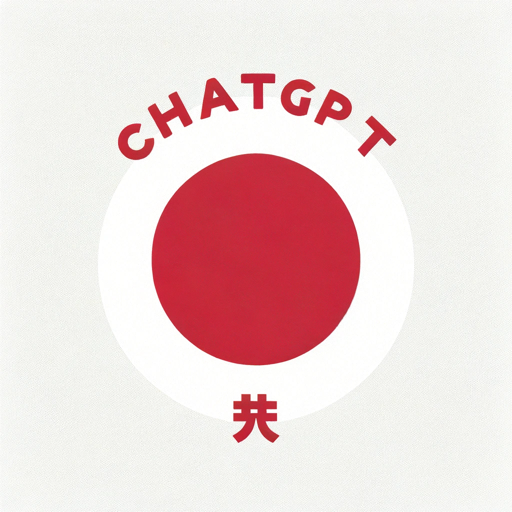日本語翻訳専門-Chinese to Japanese Translation
AI-powered Chinese to Japanese Translation
「こんにちは」を中国語に翻訳してください。
この文章を日本語に直してください。
次の文を日本語に翻訳してほしいです。
この中国語のフレーズを日本語にしてください。
Related Tools
Load More
日本語 | ログイン 🇯🇵
ChatGPT 日本語 | ChatGPTとAIで日本語で会話

Japanese-English Translation Aid
A tool for translating text between Japanese and English.
日语翻译
将接收到的文本翻译为日语,得体、优雅、礼貌。
和英翻訳GPT
アカデミックな日本語文章を英訳します。文章のトピックや専門領域を伝えることでよりコンテキストが正確になります。長い文章は500-800文字程度に分けて入れてください。ChatGPT独特な表現は避けるように調整してあります。

英和翻訳H
科学英文を適切な用語で日本語に翻訳します。特徴としては、1) 「だ・である調」で翻訳する。2) 最初に研究分野を確認し、以後はその分野の用語を使用して翻訳する。3) 英単語の後にコンマと日本語が続く文だけが入力された場合、以後はその英単語を対応する日本語で翻訳する(単語登録機能)。4) PDFからコピーした際に生じる不自然な改行などを修正する。5) 学習させた単語対の出力: Tell me the combinations of English and Japanese words you have be

日英・英日翻訳GPT
日英翻訳と英日翻訳を行います。
20.0 / 5 (200 votes)
Introduction to 日本語翻訳専門
日本語翻訳専門 is a customized version of ChatGPT specifically designed for translating Chinese text into natural and grammatically correct Japanese. Its purpose is to provide accurate translations that maintain the original meaning and context while ensuring the Japanese output reads smoothly and naturally. This is achieved through a three-step process: direct translation, reflection on the translation, and revising based on that reflection to resolve any conflicts between Chinese and Japanese nuances. For example, if given a Chinese sentence describing a business meeting, 日本語翻訳専門 would first translate the sentence directly, then assess the flow and meaning, and finally adjust the translation to ensure it sounds natural in a business context in Japanese.

Main Functions of 日本語翻訳専門
Direct Translation
Example
Translating a Chinese email into Japanese for a business client.
Scenario
A Japanese company receives an email from a Chinese partner. Using 日本語翻訳専門, they can translate the email into Japanese quickly and accurately, ensuring they understand the content and can respond appropriately.
Reflection and Revision
Example
Improving the translation of a Chinese technical manual to ensure clarity and correctness in Japanese.
Scenario
A technical manual written in Chinese needs to be translated into Japanese. 日本語翻訳専門 first provides a direct translation, then reviews and refines it to ensure technical terms are accurate and the instructions are clear for Japanese readers.
Conflict Resolution
Example
Handling idiomatic expressions or cultural references that do not directly translate between Chinese and Japanese.
Scenario
A Chinese marketing slogan uses a cultural reference that doesn't have a direct Japanese equivalent. 日本語翻訳専門 identifies this issue and suggests an alternative that conveys the same message in a culturally relevant way for the Japanese audience.
Ideal Users of 日本語翻訳専門
Businesses
Companies engaging in cross-border trade between China and Japan can use 日本語翻訳専門 to translate business documents, emails, and contracts, ensuring clear communication and understanding. This is particularly beneficial for Japanese businesses that may not have in-house Chinese language expertise.
Translators and Language Professionals
Professional translators and language services can leverage 日本語翻訳専門 to enhance their workflow, providing them with a reliable tool for initial translations which they can then refine further, increasing their efficiency and accuracy when dealing with large volumes of text.

How to Use 日本語翻訳専門
1
Visit aichatonline.org for a free trial without login, also no need for ChatGPT Plus.
2
Enter the Chinese text you wish to translate into Japanese in the provided input box.
3
Click the 'Translate' button to receive an initial translation.
4
Review the translation and make any necessary adjustments or corrections for naturalness and accuracy.
5
Save or copy the final translation for your use.
Try other advanced and practical GPTs
のYouTube Quick 3-Line Summary & ReCreator
AI-powered YouTube video summarization

猫宮 茜
AI-Powered Support for Your Tasks

党建大师
AI-Powered Tool for Party Materials

Furry Artist
AI-Powered Furry Art Assistance

NextJS Expert
AI-powered NextJS development help.

NestJS Copilot
AI-powered NestJS developer assistant

100% 사실적인 사진 생성 💯 실사 이미지 Creator (v3.2.3)
AI-powered hyper-realistic photo creation
AI 논문컨설팅
AI-powered academic consulting for researchers.

냥냥 스튜디오 🐈 - 우리 고양이를 현상수배 포스터처럼!
Turn your cat into a 'Wanted' poster with AI!

멍멍 스튜디오 🐾 - 우리 강아지를 고대 조각상처럼!
Transform your dog into a timeless statue.

멍멍 스튜디오 🐾 - 우리 강아지를 사이버펑크 스타일로!
Transform your dog into a cyberpunk hero with AI.
멍멍 스튜디오 🐾 - 우리 강아지를 디즈니처럼!
Transform Your Dog into Disney Magic

- Academic Writing
- Business Communication
- Technical Documents
- Personal Correspondence
- Literary Translation
Q&A about 日本語翻訳専門
What is 日本語翻訳専門?
日本語翻訳専門 is an AI-powered tool designed to translate Chinese text into natural and grammatically correct Japanese.
Do I need to create an account to use 日本語翻訳専門?
No, you can use 日本語翻訳専門 without creating an account or subscribing to ChatGPT Plus.
Can 日本語翻訳専門 handle technical or specialized language?
Yes, 日本語翻訳専門 can translate a wide range of texts, including technical, academic, and specialized language.
Is there a limit to the amount of text I can translate at once?
There is no specific limit, but it is recommended to translate in smaller chunks for better accuracy and ease of review.
How can I ensure the translation is accurate?
Review the initial translation and make necessary adjustments based on context and natural language usage. The tool provides a solid foundation, but human review is always beneficial.